The tall country along the Continental Divide of central Colorado still keeps its secrets. But aquatic biologist Alex Townsend is slowly unraveling the natural and human history that percolates from the waters of Twin Lakes into the towering “fourteeners” along the spine of the continent.
His ultimate prize? A rendezvous with a ghost fish that disappeared more than 120 years ago, a victim of “progress” as miners crawled along granite ridges in search of the motherlode and loggers razed black timber from the slopes of the Rockies.
Gone, but not forgotten
The fish? The officially extinct yellowfin cutthroat trout, Oncorhynchus clarkii macdonaldi. Discovered in 1889 by ichthyologist Prof. David Starr Jordan (later the founding president of Stanford University) and G. R. Fisher, the storied yellowfin reached lengths approaching 30 inches and some specimens are rumored to have weighed 10 pounds or more.
According to Jordan’s description of the fish, the yellowfin sported a “silvery olive,” hue and “a broad lemon-yellow shade along the sides. Its pectoral, pelvic and anal fins were “bright golden yellow in life,” and the fish sported “no red anywhere, except the deep red dash on each side of the throat.”
Jordan and Fisher, at the time, also documented what is now Colorado’s state fish – the greenback cutthroat trout – swimming alongside the yellowfin in the waters of Twin Lakes, a deep mountain lake that catches snowmelt from the high peaks that encircle it. They surmised that the two obviously different fish represented two distinct subspecies of cutthroat trout. It was a theory that was largely confirmed by the legendary fisheries biologist Dr. Robert Behnke, in the late 20th century when he wrote: "I have no doubt that Jordan was correct; the yellowfin trout and the greenback trout from Twin Lakes were two distinct groups of cutthroat trout.”
And, for a long time, both fish were officially lost to the world, victims of the mining boom and the predictable introductions of non-native rainbow, brook and brown trout. It was the first of the three, biologists believe, that did in the indigenous fish in Twin Lakes.
In the early 1900s, rainbow trout were introduced into Twin Lakes for both sport and as a food fish for a burgeoning mining district that built up around Leadville in the latter part of the 1800s. Count Townsend among the fisheries experts who believe all the native trout in Twin Lakes were lost to simple genetic dilution. Rainbows and cutthroats can spawn together and create fertile offspring. In time, the rainbows just took over from the natives.
For the greenback, the story remains hopeful – a relict population of genetically pure fish was discovered on the shoulders of Pikes Peak some time ago. Those fish, likely moved from their native range in the Arkansas and South Platte drainages to a lonely little creek on the Front Range for sporting purposes, are now the brood stock for Colorado’s reintroduction efforts.
But for the Yellowfin? Nary a fish has been seen for well over a century.
Is there hope?
There’s always hope, Townsend says. Last fall, the biologist finished up his second year of a study that could last four or even five more years. The aquatic biologist for Colorado Parks and Wildlife’s Area 13, which stretches from Leadville south and east to fringes of Pueblo, has the enviable task of cataloging all the aquatic habitat along the Continental Divide, starting with all the nooks and crannies situated in the Twin Lakes drainage.
The ultimate goal? Maybe, just maybe, there’s a lonely little backcountry creek that has a holdover population of yellowfins that escaped the amorous advances of the gene-killing rainbows all those years ago.
But as of yet, Townsend and his crew haven’t had much luck.
In the summer of 2022, though, they had a really close call.
“In our samples that summer, we documented two populations of cutthroat trout in the Lake Creek drainage that had questionable genetic origins,” he says. Lake Creek and its tributaries run into Twin Lakes and eventually into the Arkansas River. The Arkansas, many fisheries biologists believe, was very likely home to yellowfin cutthroats before it was planted with invasive rainbows and browns.
“But they turned out to be Yellowstone cutthroat trout,” he says. “We don’t have any record of anyone stocking Yellowstones in that drainage, but early on, bucket biologists from the logging and mining communities moved a lot of fish around for food sources.”
How Yellowstone cutthroat trout native to northwest Wyoming ended up in central Colorado is anybody’s guess, Townsend says. And last year, the biologist confirmed, he and his team turned up a whole system of non-native brook trout.
“We had no documentation on those fish,” he says. “We had no idea they were there.”
Considering the rugged, remote country along the Divide, who’s to say that the next “discovery” isn’t a small trout stream full of native yellowfin cutthroat trout that somehow escaped notice for 120 years?
“Wouldn’t that be cool?” Townsend wonders.

Habitat abounds
As Townsend puts it, the country above Twin Lakes is “totally awesome.” And, he says, he’s documented some surprising discoveries in the drainage, including some small streams that appear to offer excellent native trout habitat … but no trout at all.
“We assume many of these streams are just historically fishless,” he says. “It could also be due to the heavy mining presence in the area a century ago, and water quality may not be as good as it looks. That’s definitely something we’d have to consider if we were ever to do any fish reintroduction.”
In addition to searching out yellowfins – the Holy Grail of this study – Townsend and his team are taking a critical look at all the riparian habitat they come across, and documenting potential habitat for amphibian reintroduction. The area was once prime habitat for the boreal toad, which is listed as endangered in Colorado and New Mexico and threatened in Wyoming.
One thing the team’s study is finding? An abundance of natural barriers. Should it happen, and Townsend and his team sleuth a hidden population of yellowfin cutthroats, these barriers could be key to native trout reintroduction.
Natural barriers are tools commonly used by fisheries managers all over the Rockies. The reintroduced, and presumably native, trout are planted above the barriers where interlopers like rainbows, browns and brookies can’t access. It’s a good way to keep fragile populations of native fish intact and, hopefully propagate them for other reintroduction efforts.
Good examples of this are happening now in Yellowstone National Park, where fisheries biologists are hoping to restore westslope cutthroat trout and grayling in the upper Gibbon River above Virginia Cascade, and on Buffalo Creek in the park’s northern reaches, where non-native rainbows are scheduled for removal, only to be replaced by Yellowstone cutthroat trout above a series of natural falls.
Interestingly, much like what Townsend is seeing in Colorado, both of the watersheds, when Yellowstone’s fishery was first cataloged in the late 1800s, were deemed to be fishless. But, in the age of climate change, they’re also dependably cold. With lower-elevation rivers feeling the heat – quite literally – from low flow regimes and hotter temperatures, these oases in the backcountry may be the only long-term hope for wild and native trout in the long run.
Keeping it real
While Townsend’s work is something adventurous fisheries biologists all over the world dream of doing, he also understands that this effort to rediscover yellowfins in their native range is a long shot.
“There’s a low probability,” he says, “but not a zero probability. With the amount of water we still have to cover, you never know.”
While there’s a low chance that genetically pure yellowfins turn up in Townsend’s study, he pointed to the greenback discovery and a more recent discovery of the San Juan cutthroat trout in southwest Colorado – a fish that, like the yellowfin, was thought to be extinct, as biological Hail Marys that found the proverbial end zone.
With both species on the road to recovery – as much as the human-altered habitat of their native ranges will allow, anyway – Townsend isn’t giving up on adding a third rediscovered fish to Colorado’s bounty of native trout.
“There was a lot of movement of fish in the late 1800s,” he says. “Anything is possible.”






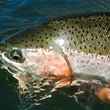




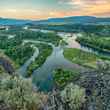









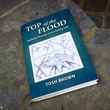




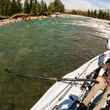



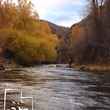
Comments